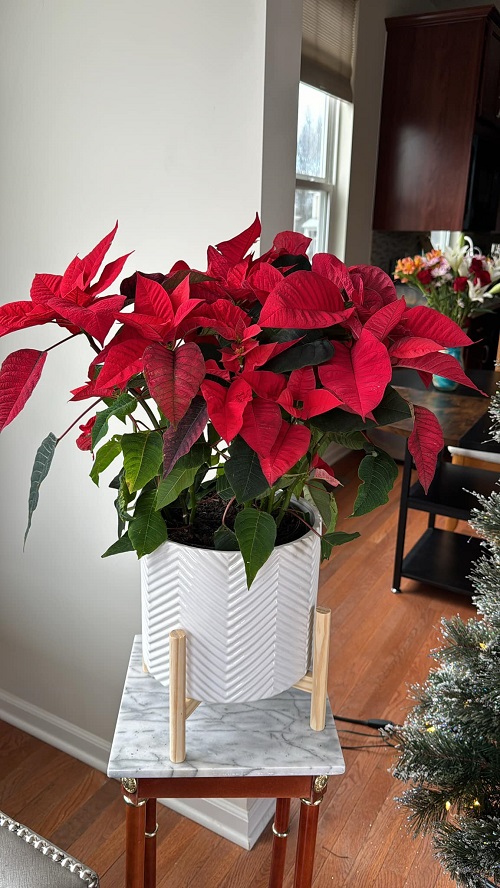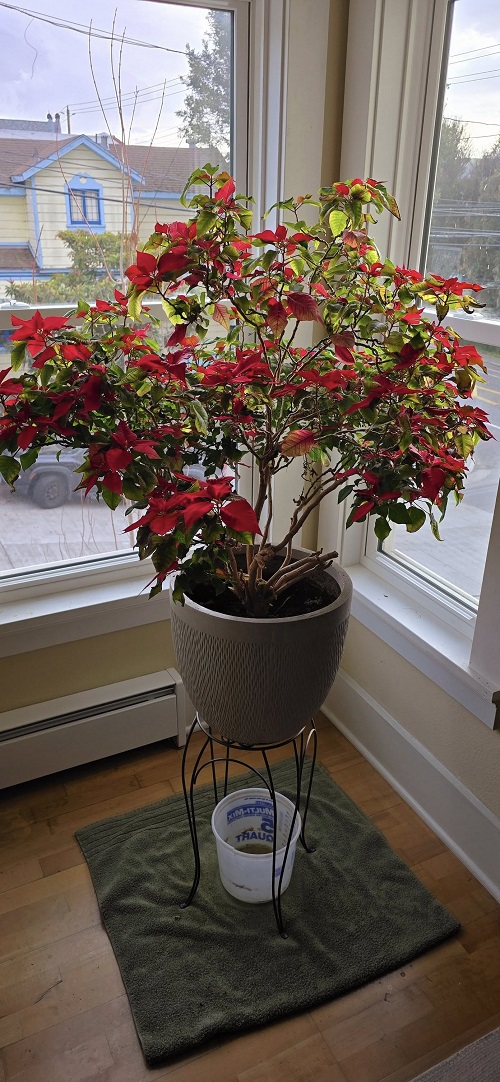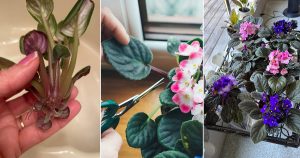Want your poinsettia to bloom again? Then follow these secret tips and enjoy colorful bracts this festive season.
Poinsettias are short-day plants, which means they bloom when the nights are longer than 12 hours. This process starts around the fall equinox. After about two months of short days, the plant begins to bloom—just in time for Christmas. The colorful leaves, called bracts, can stay bright for up to three months, making your poinsettia a beautiful holiday decoration.
It may seem easy to get your poinsettia to bloom again as the days get shorter. That happens naturally in its native Mexico or other warm places where it grows outside. But indoors, it’s different. Most poinsettias bought in bloom stay pretty for months, and once the colorful leaves drop, they don’t return on their own.
The problem is artificial light. Inside our homes, lights stay on for 16 to 18 hours a day, which confuses the plant. Poinsettias need complete darkness from evening until morning to start blooming again. Even a small amount of light at night can stop the plant from producing new, colorful leaves.
Want Your Poinsettia to Bloom Again? Here’s How to Do It Right
1. Keep It Healthy After the Holidays
Once the holiday season ends, move your poinsettia to a bright spot where it gets plenty of indirect sunlight. Avoid keeping it near heaters or cold drafts. Continue watering when the soil feels dry to the touch. If water collects at the bottom of the pot, empty it to prevent root rot. Keep the plant at room temperature to help it stay strong.
2. Cut It Back in Spring
When March or early April arrives, your poinsettia may start to look tired. This is the time to prune it. Cut the stems back to about 6 inches tall. Pruning helps the plant grow new branches and stay bushy. After pruning, place it in a warm spot and reduce watering slightly. The goal is to let the plant rest and prepare for new growth.
3. Move It Outdoors in Summer
Once the weather warms up, usually around May or June, move your poinsettia outside. Choose a shady spot where it gets bright but indirect sunlight. Too much direct sun can burn the leaves. Keep watering regularly, but make sure the soil is never soggy. Every two to three weeks, feed your poinsettia with a balanced liquid fertilizer to support growth.
4. Pinch Back New Growth
During the summer, your poinsettia will start to grow fast. To keep it compact and full, pinch off the tips of each stem when they are about 6 inches long. Repeat this every few weeks until early September. This will help your poinsettia develop more branches and, later, more colorful bracts. Stop pinching after September so it can prepare for blooming.
5. Create Darkness for Reblooming
Put your poinsettia in a room that isn’t used at night but gets some sunlight during the day, like a guest room. Remove all the light bulbs from the room, then place the plant near a window. This way, even if you forget and try to turn on the light at night, the room will stay dark. Your poinsettia will then get the darkness it needs every night and will bloom beautifully by Christmas.
6. Return to Normal Care
After about 8 to 10 weeks of dark treatment, you should see tiny flower buds forming. Once that happens, you can stop the darkness routine. Keep the plant in a bright area and continue watering and feeding as usual.















